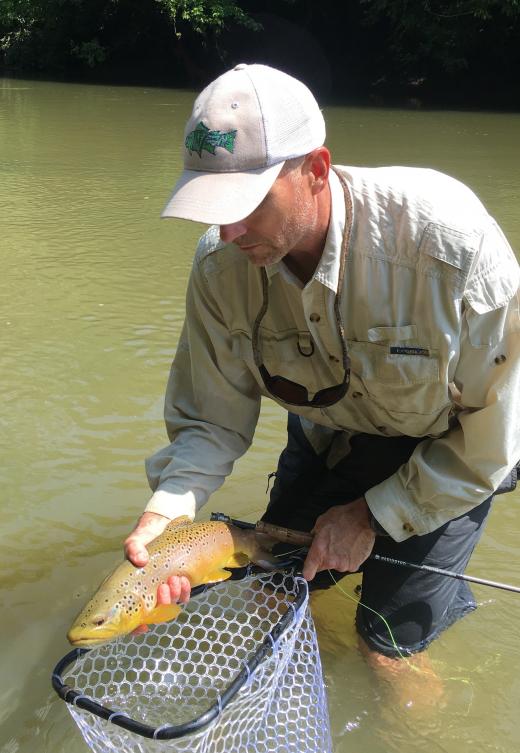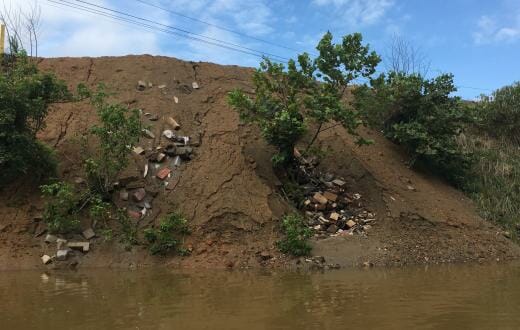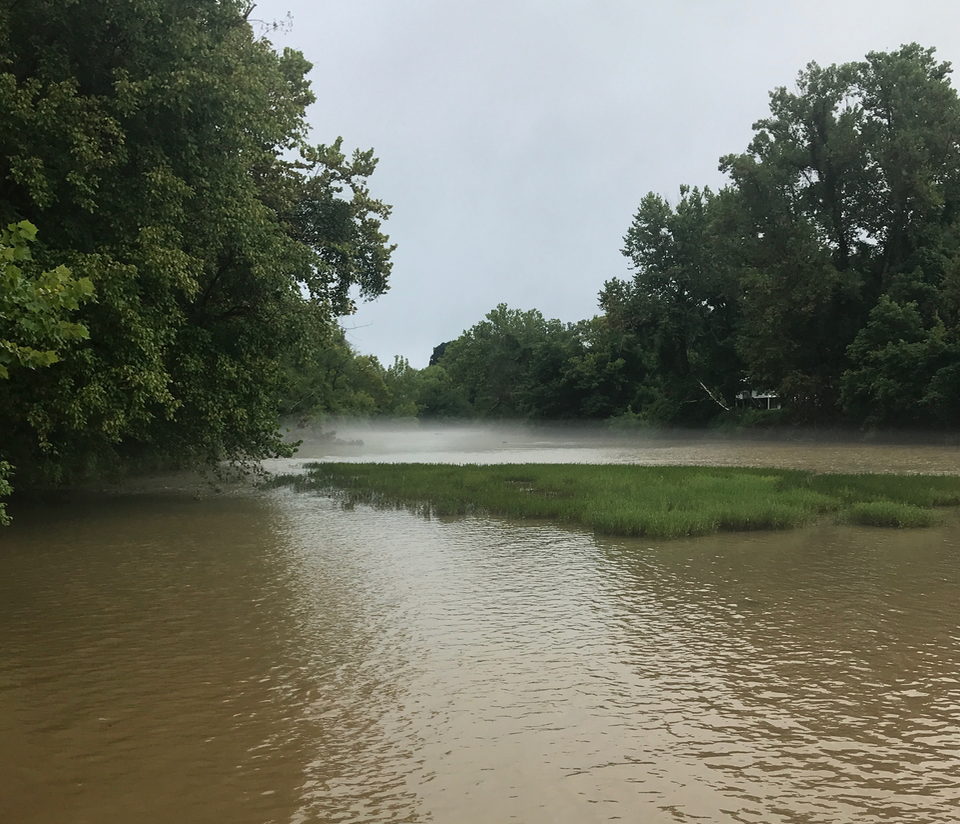By Mark Taylor
The river was brown.
Coffee-with-heavy-cream brown.
It’s-been-raining-for-days brown.
You-don’t-have-a-chance-in-hell brown.
“Top off the raft and get the stuff down to the shore while I go drop off the truck,” I told my fishing partner for the day, Brett Prettyman. “I’ll probably be back before you’re done.”
So, if conditions were more appropriate for soaking stinkbait on the bottom for catfish, why were we even bothering to do a float for trout? Because this was pretty much going to be a work meeting anyway. So, why not do it on the river? Brett is one my Trout Unlimited communications team counterparts. He is based in Utah, but was out East on a family trip.
Conveniently, there’s a pretty good trout river midway between where he was staying and where I live. Actually, Virginia’s Smith River is, in my opinion, better than pretty good. It’s a tailwater, with about 30 miles of trout water. The upper stretches have lots of small wild browns. The lower section has fewer but bigger fish. The Smith River TU chapter has for years been working closely with the Virginia Department of Game and Inland Fisheries to improve the fishery, and those efforts are taking hold.
Local officials in Martinsville and Henry County have recognized the attraction of the river, a bright spot in an area devastated by widespread closures of furniture and textile factories that were once the key driver in the region’s economy. There are riverside trails and developed canoe launch areas, complete with information and map kiosks.

Virginia’s Smith River has some nice wild brown trout. You can catch them when the water is a little off-color, but apparently not when it’s dirty brown.
In short, it’s a river and area that’s not unlike a lot of what we see out here in the East: A tailwater impacted by urban development (or, in this case, urban decay) where managers are trying to strike a balance between wild and stocked trout. So even though Brett, like the rest of the team out West, has different work priorities and focuses, I was eager to show him the river because it helps us all when we have a better understanding of issues outside of our normal purviews.
The Smith is not an easy river to fish. The browns can be frustratingly selective. Big flow swings from the bottom-release Philpott Dam upstream and the smaller Martinsville dam 20 miles below, both hydro projects, add to the challenge.
And this week there was the rain thing. We’d been getting hammered for a few days here in the mid-Atlantic. Looking at real-time USGS streamflow information that morning I held out hope. The river flows weren’t bad. Philpott generation wasn’t to start until noon and the daily Martinsville Dam surge, to account for the previous day’s slug from Philpott, was on its way down. But there are some smaller creeks that feed into the Smith, and those were the culprit. Even though the worst of the recent rains had tailed off, those creeks were still washing loads of silt into the stream.
It’s not unlike what we see plenty of other places, such as in the upper reaches of the Chesapeake Bay watershed, where TU is hard at work tackling erosion issues on headwaters streams.

Run-off from a parking lot has created bad erosion on a Smith River bank near Martinsville, Va. The exposed concrete blocks may be fill from a long-ago construction project (The Virginia Department of Environmental Quality has been notified about this situation.)
Even though conditions looked terrible I tried to be optimistic as I pedaled my bike back to the put-in after dropping the truck. Maybe as the water levels dropped the predatory browns would be on the prowl. I hoped so because the last time Brett was out here we had an unusually terrible smallmouth day on the New River.
Well, I’m now 0-for-2 now as a guide for Brett on my home waters.
Because we weren’t distracted by fish we had more time to talk shop. It was as productive as a fishless day can be. We anglers are good at being optimists. If we weren’t, we’d quit because there are going to be difficult days. We look ahead to when things will improve, basing our optimism on memories of days when things were great. I fully expect that the next time I hit the Smith we’ll crush them. I’ll send Brett some I-told-you-it-can-be-good pictures and hope that on his next trip out this way we’ll finally get to spend more time catching fish than talking about work.
Mark Taylor is Trout Unlimited’s eastern communications director. He lives in Roanoke, Va., smack between two good tailwater trout fisheries — the Jackson and Smith rivers.



